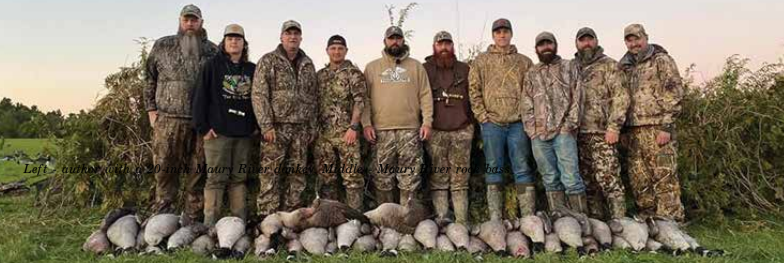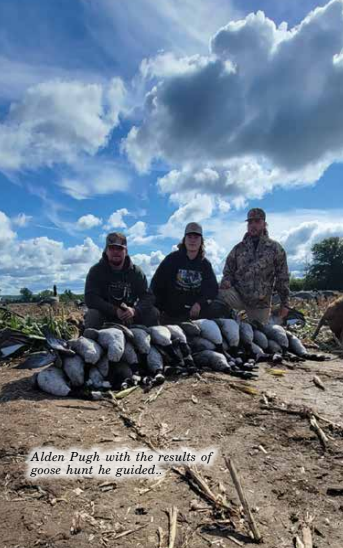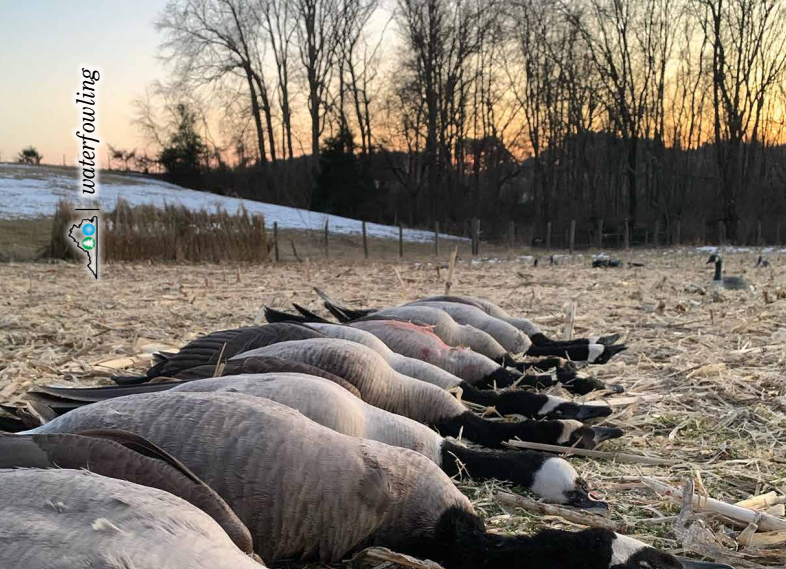Ask any waterfowl hunter what their dream bird would be, and you’ll get answers ranging from pintails to harleys to hybrids. Most hunters dn’t think twice about a common goose as their trophy bird. Here in Virginia, the Canada goose is always a prize bird.
The Old Dominion is fortunate to house not only migrating geese, but an abundance of resident geese. Thanks to our neighboring state of Maryland, the Chesapeake Bay watershed attracts thousands of migraters every year.
Although the goose population has been on a slight decline in the past decade, numbers have not decreased low enough to close the September season like in 1995. Virginians are lucky enough to have the agriculture of the Piedmont and tidewater regions to feed these visiting birds, keeping hunting season open.
Recent studies have shown a below average amount of geese in Virginia, causing regulations to alter. What was once a 50-day season has now become a 30-day season where the daily bag limit ranges from a single goose a man in the Atlantic Flyway to three geese a man in the Southern James Bay region.

These declining numbers are mainly due to the unfavorable weather conditions in their nesting grounds of Canada. This causes less breeding pairs and a delayed migration. Because we can’t control Mother Nature, Virginia makes up for it in having an abundance of grain fields for easy meals for both resident and migrating geese.
But finding them is only half the battle. The other half is tricking them into getting within 25 yards of your shotgun. We do this with using the right type and number of decoys, as well as knowing how to blow a goose call.
There are two types of hunting when targeting geese: 1) trafficking and 2) being “on the X.”
Trafficking birds means using hundreds of decoys, including socks, silhouettes and full bodies. A trafficked spread is used to attract huge groups of migrating birds, whereas an “on the X” spread is usually much smaller with a few dozen full bodied and shell decoys to target compact groups of geese.
Along with the type of decoy set-up you’re using, a goose caller must also adapt to the type of calling in order to attract the birds.
I spoke to native Virginian and Junior Champion duck and goose caller, Alden Pugh about how he handles his hunts. At just 15 years old, Alden has held the junior goose calling championship twice and won countless other competitions. He’s had his fair share of limiting out on geese thanks to his rig and calling talents.
When hunting “on the X,” Alden’s typical call is cutting down the pressure and grabbing their attention with a few loud notes.
As the birds show interest, he speeds up his cadence and turns the birds back on a tight line.
If the geese are circling above the decoys, he calls at them slowly and less frequently.
Calling at geese “on the X,” is almost like having a conversation with them, going back and forth, until they finally decide to land in the hole.

This is the complete opposite when trafficking geese. From the moment you first see a goose to the shot call, you should be ripping on a goose call.
Alden told me he mimics 80% of his stage routine on these hunts. These birds need loud, fast, and constant “talking to” to get them to even look at your decoys. As they get closer, you can back off the calling a little bit, mainly to catch your breath, but don’t be afraid to start right back up, just as aggressive as the first note.
Don’t fret if you don’t know how to use a goose call. The waterfowl community, specifically the calling industry, is very welcoming to beginners. As a champion caller myself, I love teaching and helping novice hunters.
You can also attend hunting shows like the Green Top Outdoor Expo or Virginia Sportsman Show and learn calling techniques from experts during free seminars.
Regardless of your dream bird, I think we can all agree that geese are a blast to hunt and an even bigger prize to eat.
Author Travis Stauch is USCG licensed waterfowl and bowfishing guide that spends many days on the tidal Potomac River. He is a member of the Woods & Waters Pro Team. You can reach him via email at ramrodbowfishing@mail.com.



